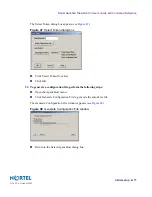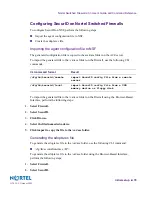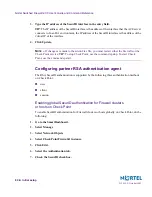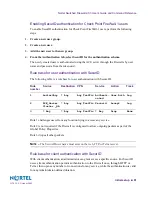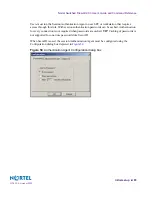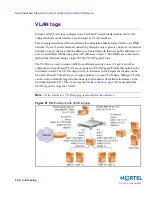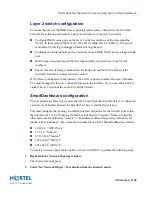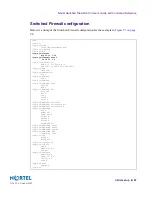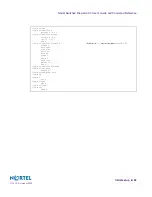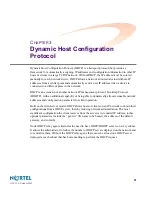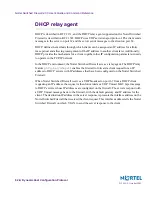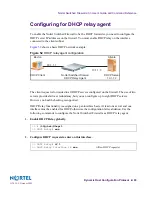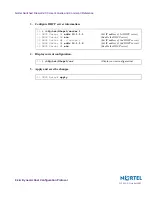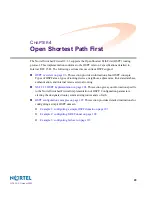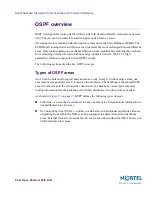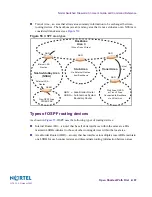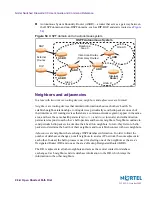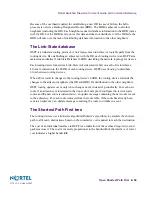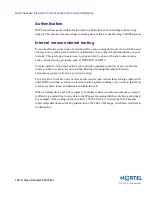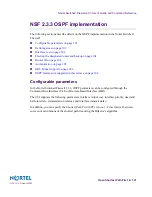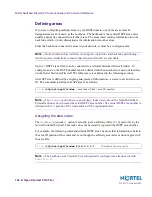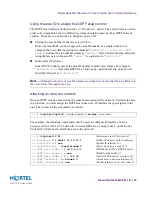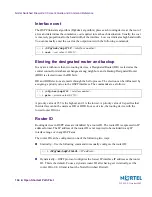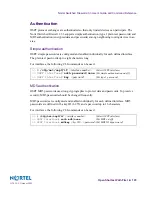
213455-L, October 2005
91
C
HAPTER
3
Dynamic Host Configuration
Protocol
Dynamic Host Configuration Protocol (DHCP) is a transport protocol that provides a
framework for automatically assigning IP addresses and configuration information to other IP
hosts or clients in a large TCP/IP network. Without DHCP, the IP address must be entered
manually for each network device. DHCP allows a network administrator to distribute IP
addresses from a central point and automatically send a new IP address when a device is
connected to a different place in the network.
DHCP is an extension of another network IP management protocol, Bootstrap Protocol
(BOOTP), with an additional capability of being able to dynamically allocate reusable network
addresses and configuration parameters for client operation.
Built on the client/server model, DHCP allows hosts or clients on an IP network to obtain their
configurations from a DHCP server, thereby reducing network administration. The most
significant configuration the client receives from the server is its required IP address; (other
optional parameters include the “generic” file name to be booted, the address of the default
gateway, and so forth).
Nortel DHCP relay agent eliminates the need to have DHCP/BOOTP servers on every subnet.
It allows the administrator to reduce the number of DHCP servers deployed on the network and
to centralize them. Without the DHCP relay agent, there must be at least one DHCP server
deployed at each subnet that has hosts needing to perform the DHCP request.

